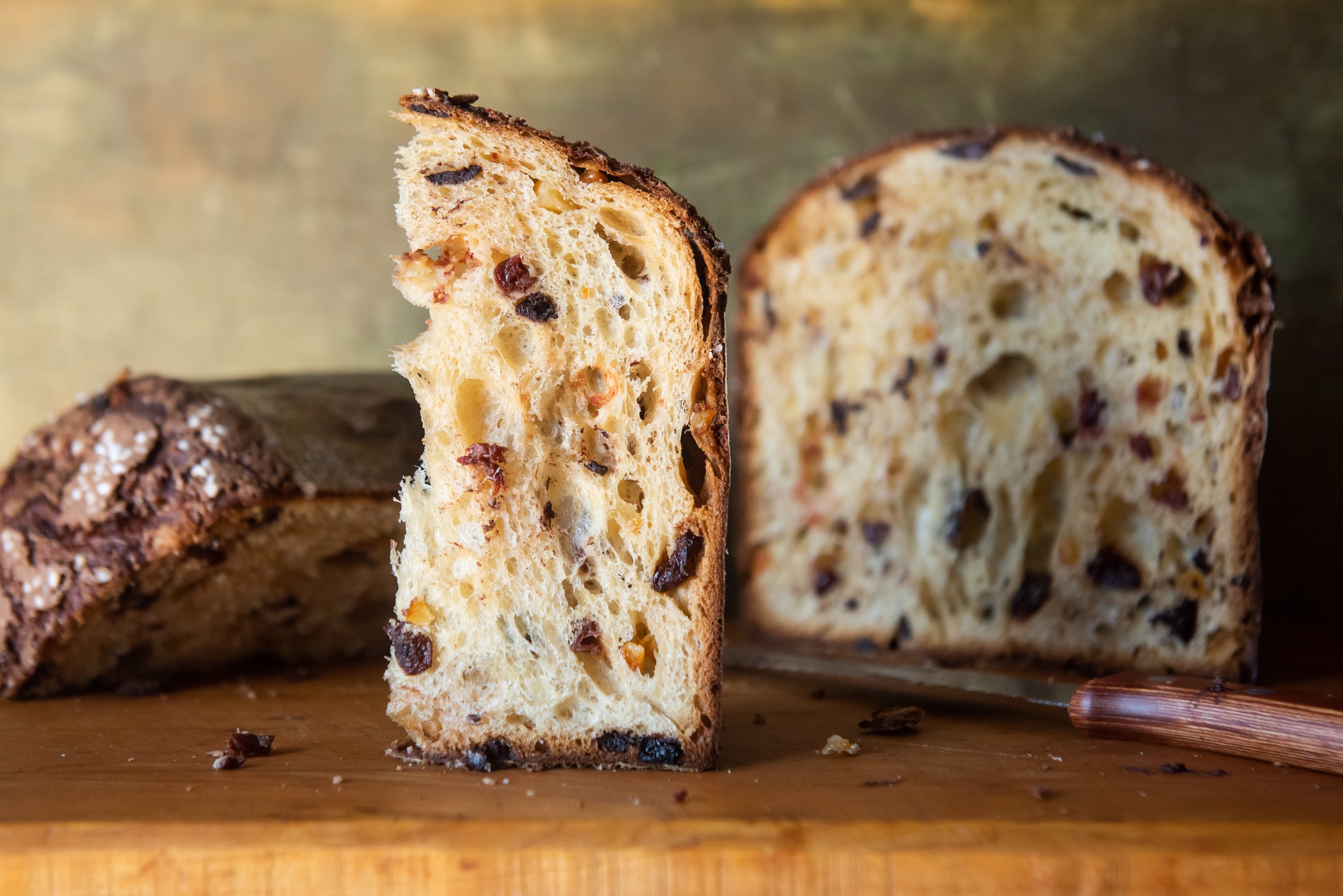Ellē’s Six-Day Panettone
Baker Andrew Myers of Ellē goes the extra mile for sourdough sweet bread.
photos: will blunt
Baker Andrew Myers is a glutton for punishment, and sourdough. When the holiday season arrives at Elle in Washington, D.C., Myers spends all hours of the day baking German stollen, Yule-log-style roulades, challah, and, the most laborious of the bunch, a limited supply of naturally leavened panettone. Already considered a complex recipe, adding a sourdough starter to the mix means a six-day turnaround and endless room for error. “Making [panettone] is a very humbling experience as a baker,” says Myers. “It can go wrong at any step and it has. I do it because I like doing it, but I still have a lot I want to learn.” But for Myers, a good batch is worth the effort, and with more orders coming in every year, D.C. is also thankful for his perseverance.
baker andrew myers of ellĒ
Days 1, 2, and 3
Ellē’s 5-year-old whole wheat sourdough starter is the base for the sourdough panettone. Myers feeds it with white bread flour to achieve a milder flavor than a traditional sourdough loaf. In order to get that levain active, the starter must be fed every three to four hours for two to three days. After the last feeding, it goes into the fridge to rest.
Day 4
Once the starter is active, it’s time for the first mix. The starter is added to a stand mixer, followed by flour, egg yolks, sugar, and butter and mixed for 10 to 15 minutes. The soft dough gets covered and rests at room temperature to ferment overnight—a key step when it comes to achieving the panettone’s strength and eventual lightness.
Day 5
By the following morning, the dough should have tripled in size. Myers returns it to the stand mixer and adds in more butter, egg yolks, and sugar (in that very order) as well as honey, salt, and the dried, candied fruits and chocolate that will speckle and flavor the panettone. The dough is mixed for an hour until it becomes smooth and cohesive, then rests for 15 to 20 minutes.
It’s time for the second (and final!) proofing: Myers divides, shapes, and places the individual doughs into their round paper containers. Depending on the room temp, the proof takes eight to nine hours so by midday, the individual panettone should be plump and ready for baking. Myers glazes each loaf and sprinkles them with coarse sugar before they are baked in a convection oven for an hour. The golden brown loaves are then moved onto a rack that suspends them upside down. They hang there overnight as gravity solidifies the dome-like shape and open crumb.
Day 6
Once the panettone are fully cooled, they can be flipped right-side up and served. The moment of truth comes when Myers cuts into a loaf, hoping to find a light and airy interior, a bitter sweetness, and a slight chew. Myers may eat half a loaf before getting to work on the next batch.









